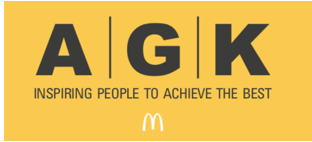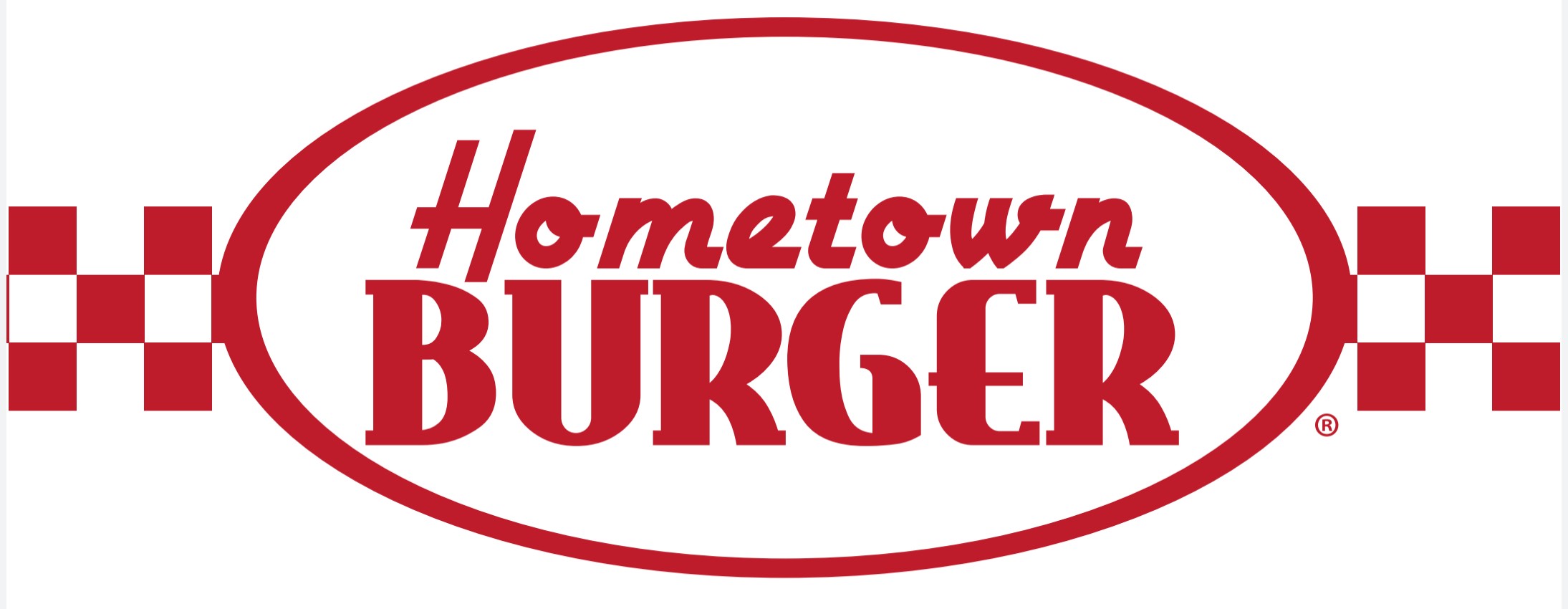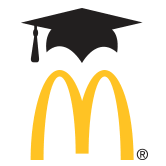Title Page
-
Conducted on
-
Prepared by
-
Location
Shift Manager Verification
General Information
-
Manager Name
-
Date and time
-
Serve safe Certificate number
Food Safety
Hygeine & Sanitation
-
Manager must pass with less than 3 non-critical violations and zero critical violations.
-
FS1-US Required supplies are at all hand washing sinks to include warm running water. Hand wash sinks are only used for hand washing and not for preparing food or storing equipment. Hand wash sinks are easily accessed by employees.
-
Hand washing sink knobs/ automatic tap not working well
-
Soap dispenser empty/ not working well
-
No warm water running
-
No paper towel/ working hand dryer
-
Soap dispenser does not contain Ecolab approved hand soap
-
Hand washing sink/ tap obstructed and not accessible
-
Hand washing sink used for other purposes
-
Other (describe)
-
FS2-US Hands are properly washed following proper hand washing procedures at the appropriate times. A system is in place to ensure hourly hand washing by all employees.
-
Hands not washed on hourly basis
-
Hand washing clock/ timer not working/ not in use/ system not in place
-
Hand washing activity not monitored
-
Hands not washed after using the restroom/ taking a break
-
Hands not washed after handling raw products and working on other stations, e.g. prep table.
-
Hands not washed after task such as handling waste, touching face, hair, picking something off the floor, etc.
-
Other (describe)
-
FS3-US Sanitized towel buckets contain towels and sanitizer solution at the correct concentration checked with a chlorine test strip.
-
Fresh bucket with sanitized towels not prepares
-
Buckets not labeled
-
No towels in fresh bucket
-
Used towels mixed with fresh towels
-
Bucket is soiled
-
Sanitizer level is not at correct concentration
-
Test strips not available/ damaged/ expired/ not in usable condition
-
FS4-US Sanitizer-soaked towels and grill cloths used at food or beverage preparation and service areas must be placed into the soiled towel bucket after using and not be left sitting out on surfaces.
-
Grill towels left out on kitchen surfaces
-
Cloth towels left out on kitchen surfaces
-
Cloth towels left out on beverages/ service areas
-
Other (describe)
-
FS5-US All UHC trays, grill utensils, prep table utensils, and utensil holders are clean (no build up) and are washed and sanitized at least every 4 hours as per approved procedure. Back sink and soap/sanitizer dispensers or dishwashers must function (hot water 110 ° F or higher) and all supplies must be available. Check that sanitizer solution has the right concentration with an appropriate test strip
-
UHC trays, utensils and utensil holders are not clean
-
Items are not being cleaned and sanitized every 4 hours
-
Back sink dispenser/ ware washer not operating properly
-
Sanitizer solution not at the correct concentration
-
Dirty utensils resting in the back sink for more then 4 hours
-
Water at back sink is not 110 degrees F or hotter
-
Test strips not available/ damaged/ expired/ not in usable conditions
-
Other (describe)
-
FS5-US-01 All soiled raw wares that came into contact with raw proteins (such as fresh beef and raw chicken) are washed and sanitized last (unless a warewasher is used). Soiled blue raw beef trays and lids are kept in blue bus box until cleaned. Back sink is properly sanitized after washing wares that came into contact with raw proteins.
-
Raw ware equipement not cleaned last
-
Raw ware equipment not washed seperatly
-
Soiled raw beed trays(s)/ lid(s) are not stored in blue bus box
-
Back sink/ Powersoak sink not cleaned after washing raw ware equipment
-
Raw ware equipment soaking in power sink
-
Other (describe)
CONTAMINATION PREVENTION
-
FS6-US Appropriate measures are taken to protect water and ice from foreign material, chemicals and/or bacterial contamination. Check that water filters are in date and the ice machine is free from mold or buildup.
-
Water filters not in date
-
Water filters bypassed
-
Water/ ice not protected from possible contamination
-
Ice machine has mold or visible buildup
-
Other (describe)
-
FS7-US Opened packages of food in storage, (including refrigerators and freezers) are covered/wrapped, labeled, and stored according to proper procedures.
-
Frozen beef
-
Fresh beef
-
Frozen chicken
-
Fish
-
Breakfast meats
-
Potato products
-
Bakery/ buns
-
Produce/ salad ingredients
-
Cheese/ eggs/ dairy
-
Other (describe)
-
FS8-US Blue disposable glove procedures or dedicated tongs are used to prevent crosscontamination when handling all raw meat or poultry products (including shell eggs) at the grill station and fryer station. Dedicated utensils are used for raw products (e.g. the yellow yolk breaking tool is only used to break egg yolks).
-
Gloves not discrarded when removed/ are being reused
-
Double set of gloves being worn
-
Proper blue gloves procedures not being followed
-
Yellow yolk breaking tool not available
-
Yellow yolk breaking tool used for items other than raw eggs
-
Utensils other than yellow yolk breaking tool used to break raw egg yolks
-
Bare hands used with raw product at grill/ fryer
-
Other (describe)
-
FS9-US Clear/white disposable gloves worn for food preparation of ready to eat foods at the sandwich prep table, salad prep table, and in all other areas to prevent bare hand contact with any cooked or ready-to-eat foods.
-
Hands not washed prior to putting on a new clean pair of disposable gloves
-
Gloves not worn when preparing sandwiches, salads, or burritos
-
Gloves not replaced when damaged/ contaminated
-
Gloves not discraded when removed/ being reused
-
Gloves not changed and hands not washed if gloves become contaminated
-
Clear gloves are used for handling raw products
-
Double set of gloves being worn
-
Other (describe)
-
FS10-US Chemicals are stored away from food and packaging.
-
Chemical spray bottles/ containers stored in the kitchen
-
Chemical spray bottles/ containers stored in the service area
-
Chemicals are stored in the dry storage near food and packaging
-
Other (describe)
-
FS11-US The restaurant building, corral and any area within 10 feet (3m) from the building (i.e. inside the Drive-thru lane) is clear from infestation by rats, mice, insects and birds. *If the restaurant has signs of pest infestation this question is considered a fail*
-
Inside the restaurant has visible infestation
-
Inside the restaurant shows signs of infestation
-
Outside the restaurant has visible infestation
-
Outside the restaurant shows signs of infestation
-
Other (describe)
-
FS11-US-01 Pest management program and pest prevention steps and behaviors are in place and are being managed effectively. The restaurant is properly pest proofed to prevent entry of pests (e.g. gaps under doors are sealed).
-
Pest management program is not inplace
-
Pest management program is not working effectively
-
Restaurant is not pest proof
-
Other (describe)
-
FS12-US Non-food spill clean-up procedures in place. Ask 3 employees of non-food procedures. Include names in notes. If employees do not know answer this is considered "Needs Action".
-
3N1 cleaner/ disinfectant not available
-
Staff not trained in the use of the non-food spill procedures
-
Non-food spill procedures not available
-
Other (describe)
Storage
-
FS13-US Walk-in freezer and any other primary storage freezers at 0° F (-18° C) or below. Secondary storage freezers are keeping all products solidly frozen.
-
Reach-in freezer
-
Kitchen wall freezer
-
Fry freezer
-
Frozen fry freezer
-
Walk-in freezer
-
Other (describe)
-
FS14-US Refrigerated products inside all refrigerated units are at or below 40° F (4° C) (including shake/sundae reservoir).
-
Walk-in cooler
-
Reach-in cooler
-
Prep line
-
Grill side refrigerator
-
McCafe
-
Shake/ Sundae resevoir
-
Milk/ Beverage coolers
-
Salad displays
-
Other (describe)
-
FS16-US Secondary shelf lives of refrigerated foods held at room temperature and in refrigerators are marked and the products are being used within their secondary shelf lives.
-
Fresh beef
-
Produce
-
Cheese/ eggs/dairy
-
Sauces
-
Milk
-
Shake/ sundae mix
-
Others (describe)
-
FS17-US Leftover heated foods are discarded (including any shake/sundae mix removed from heat treatment shake/sundae machines).
-
Shakes/ sundae mix
-
Other (describe)
COOKING
-
FS18-US Pyrometer with needle probe is calibrated and working correctly
-
Probe not complete/ missing
-
Pyrometer not in calibration
-
Pyrometer / Probe damaged
-
Unapproved pyrometer in use
-
Other (describe)
-
For items FS19-US - FS22-US, if any item is missed, the restaurant is considered unacceptable on food safety procedures verification. Be sure to check and observe a full run of product for each section or grill or fryer on or in which the product is being cooked.
-
FS19-US The internal temperatures of beef patties after cooking are at or above 155° F (69°C) and fresh beef patties at or above 175° F (80° C).
-
Frozen 10/1
-
Fresh 4/1
-
Other (describe)
-
FS20-US The internal temperatures of raw chicken products after cooking are at or above 165° F (74° C).
-
Chicken tenders
-
McNuggets
-
Crispy chicken
-
Grilled chicken
-
McChicken
-
Other (describe)
-
FS21-US The internal temperatures of breakfast steak and breakfast sausage after cooking are at or above 155° F (69° C) for sausage made from beef or pork and 165° F (74°C) for sausage made from poultry
-
Breakfast steak
-
Breakfast sausage
-
Others (describe)
-
FS22-US The internal temperatures of round eggs after cooking are at or above 155°F(69°C).
-
FS23-US The internal temperature of Filet-O-Fish portions after cooking are at or above 150°F (66°C).
GENERAL
-
FS24-US All food, food packaging, equipment (including utensils), and cleaning chemicals are from approved sources.
-
Packaging not from approved sources
-
Equipment not from approved sources
-
Cleaning chemicals not from approved sources
-
Food not from approved sources
-
Other (describe)
-
FS25-US Managers understand employee illness symptoms and reportable illness causes for when an employee cannot be working. Managers also understand when an employee can return to work after illness.
-
Manager does not know what symptoms would result in employees not being allowed to work
-
Manager does not know the procedures to follow when presented with an ill employee
-
Manager does not know when and employee should return to work
-
Manager does not know the reportable illness causes
-
Other (describe)
-
FS26-US All managers (including shift managers) are trained and currently certified in food safety through ServSafe (or an equivalent and accredited food safety training course).
-
Proof of food safety training not available
-
Certification is overdue and needs to be reissued
-
Not all managers have been trained and certified
-
Food safety certificate not available
-
Other (describe)
-
FS26-US-01 All employees are trained and verified on food safety and sanitation per McDonald's current training program and in accordance with local regulations.
-
Not all employees have been trainied and verified
-
Records not available
-
Other (describe)
-
FS27-US Managers (or staff assigned to complete the checklist) have been trained on and can demonstrate how to properly complete the procedures on the Daily Food Safety Checklist. *CRITCAL*
-
Manager/ assigned staff does not complete pyrometer check correctly
-
Manager/ assigned staff does not complete breakfasst grill products checks correctly
-
Manager/ assigned staff does not complete regular menu grill products checks correctly
-
Manager/ assigned staff does not know how to measure freezer temperature correctly
-
Manager/ assigned staff does not know how to measure frozen/ refirgerated products correctly.
-
Other (describe)
-
FS28-US At least the last 60 days of correctly completed Daily Food Safety Checklists are available and the last two correctly completed Monthly Food Safety Procedure Verifications are available
-
Last 60 days completed daily food safety checklist (digital records) not available.
-
Incorrect completion of last 60 days completed Daily food safety book
-
Last two completed monthly food safety procedure verification
-
Most current daily food safety book not being used
-
Other (describe)
-
FS29-US Review the most recent health department inspection report, ensuring all food safety violations noted have been corrected or a plan is in place to correct issues.
-
Health department inspection report not available
-
Violation noted by health department have not been corrected
-
Plan not in place to correct issues
-
Other (describe)
-
Notes: Critical food safety questions if not compliant, these questions result in automatic failure. Follow up is required within 14 days.
-
For Remaining core questions, if 3 or more are marked NO, the results in a failure and follow up is required.
-
Auditor signature
-
Manager signature
Shift verification
General SIO
-
Pre-shift checklist complete
-
Staffing levels appropriate for volume
-
Crew positioned to meet customer demands
-
Second side open (when needed)
-
Proactively Manages Danger Zones
-
Stocking 24/2 (SIP)
-
Manager sets targets, everyone knows targets
-
Targets and results are tracked
-
Manager managing from the Observation Zone
-
Cars are pulled forward immediately if the order is not ready
-
Hand washing is taking place
-
Food Safety Daily Checklist Complete
-
Shift Manager Food Safety Certified
Service
-
Results vs. target being tracked
-
Six steps at front counter, seven at DT
-
Order accurately filled; condiments, napkins receipt, etc.
-
Be Nice Hospitality- Smiles, courteous, helpful,friendly, eye contact
-
Management Appearance- proper uniform, complete with name tag, clean/well groomed
-
Crew Appearance- proper uniform, complete with name tag, clean/well groomed
-
DT & Counter Equipment- operating and positioned properly, enough headsets, etc
-
Order taker suggestive sells when appropriate
-
Travel paths completed.
QUALITY
-
Production tested.
-
Hot and fresh
-
Neat appearance
-
Good taste, properly prepared
-
Fries/ Hash brown- Hot, fresh, good flavor, salted properly, & golden color
-
Beverages- Properly filled, good flavor and texture, holding times expectable
-
Buns/ muffins/ bagels- toasted properly
-
Production Manager - with 11 or more crew, adedicated production manager has been shown to help expedite production and service. With fewer than 11 crew, it is helpful to have someone assigned production responsibilities.
-
Cabinet Charts- in place, up to date, and followed. Holding times adhered to
-
Raw products/ buns
-
Within code dates
-
Secondary shelf lives marked
-
Prep table times marked/monitored
-
Tempered product properly marked
CLEANLINESS
-
Guest Conveniences- self serve area -clean, and supplies stocked, high chairs clean, music on
-
Lobby/Dining Room-floors, chairs, tables, lobby trays properly cleaned.
-
Restrooms- Clean, odor free, supplies available, hand dryer working
-
Windows/Doors- All windows/mullions clean (including DT windows)
-
Outside Lighting - all bulbs working, clean & in good repair
-
Patio- seating, trashcans, floor, play unit, clean & well maintained
-
Trash Cans/Sidewalks- Clean and in good repair Emptied as needed
-
Signage/Flags- In good repair, clean and properly displayed, DT menu board and speaker/COD clean and in good condition.
-
Landscape/Parking Lot- Parking lot free of litter, landscaping well maintained
-
Kitchen- floors, walls, stainless, equipment clean, not cluttered and in good repair
-
Front Counter/DT- floors, walls, stainless equipment clean, not cluttered and in good repair
ADMINISTRATIVE
-
Shift manager must be able to explain reports and display functions correctly.
-
Daily activity report can be pulled, and explain the report.
-
Shift manager does not know how to pull Daily activity
-
Shift manager cannot explain/ read Daily activity
-
Service reports can be pulled, and explain the reports. Front counter, Drive thru, CSR
-
Shift manager does not know how to pull reports
-
Shift manager cannot explain reports
-
Shift manager can transfer product in/ out of store correctly
-
Shift manager cannot access transfers
-
Shift manager does not know how to transfer product]
-
Shift manager can count, record and enter waste
-
Shift manager cannor count waste
-
Shift manager cannot record waste
-
Shift manager cannot enter waste
-
Shift manager can count down drawers and enter into system
-
Shift manager does not count drawers correctly
-
Shift manager does not know how to enter drawers into system
-
Other (describe)
-
Shift manager can complete a deposit and explain policy
-
shift manager cannor complete deposit
-
shift manager cannot explain policy
-
Shift manager can document employees
-
Shift manager can complete shift positioning correctly
-
Shift manager can complete Food safety audit check list correctly
-
Shift manager knows their EID and password include their EID.
PROCEDURES
-
Can shift manager Coach crew correctly?
-
Can shift manager explain r2d2 charts
-
Can shift manager dial grills up/ down and explain when they would need to do so.?
-
Can shift manager demonstrate what do if there is a "Pinking" complaint
-
Can shift manager explain what the steps are for "Pinking".
-
Can shift manager explain what the Guest recovery steps are?
-
Can shift manager explain the cause to shut down a restaurant?
-
Can crew on the shift up to 3 explain what to do in case of evacuation?
END OF VERIFICATION
-
Shift manager signature









